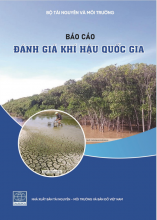
Through geography lessons, we all know that Vietnam is a country located in the strong and stable Asian monsoon region, so the potential of wind energy in our country is considered to be extremely abundant. To a survey of the World Bank (World Bank), although Vietnam is a country with average wind potential compared to other countries in the world and in the region, it has an estimated total wind power potential of 513,160MW, 200 times larger than the capacity of Son La hydropower plant and more than 10 times the total forecasted capacity of Vietnam’s electricity industry by 2020.
Renewable energy has been and is being proven to be one of the most suitable measures to reduce greenhouse gas emissions, reduce pollution and save fuel sources. The report on the potential of offshore wind and wave energy in Vietnam’s seas provides information on the current status of research, technology development and exploitation of offshore wind and wave energy in the world and in Vietnam.

Today, the energy sector has become a particularly important factor in addressing climate change. Therefore, it is absolutely necessary to develop a system of policies and actions to reduce emissions from the energy sector. Recognizing the importance of climate change action-monitoring indicators in relation to energy mitigation policy, this guide has been developed to provide an overview of energy-related climate change issues in Asian countries.
This report details the importance of statistics in policy making and analysis, as well as best practices in setting strong goals, especially in terms of renewable energy, energy intensity and carbon footprint. The report concludes that collaboration among policymakers, statisticians, energy planners and other energy-related analysts within government ministries is essential.

The first National Climate Assessment Report was developed with the aim of providing information on the characteristics, current status and extent of climate change, and current and future impacts of climate change to support the development and implementation of climate change response plans and integration of climate change response into socio-economic development activities of ministries, branches and localities. In addition, the Report also contributes to disseminating and raising social awareness about climate change, impacts of climate change, challenges and opportunities in responding to climate change in Vietnam.
The main contents of the Report are related to (i) Analysis of climate variability and change in Vietnam (Chapter I); (ii) Determining the appropriateness of climate change scenarios, the use of climate change scenarios in climate change response activities (Chapter II); (iii) Assess and synthesize the impacts of climate change on the main target groups such as hydro-meteorological disasters, natural resources, environment and ecosystems and socio-economic activities (Chapter III); and (iv) Synthesize and evaluate the effectiveness of climate change response policies in Vietnam taking into account impacts on socio-economic development and sustainable development goals (Chapter IV). Because the Report was prepared for the first time, some information and evaluation indicators have not been fully developed, collected and applied, so it needs to be updated and perfected in the following reporting periods.
The first National Climate Assessment Report provided basic information on the characteristics, status, and extent of climate change, climate extremes, and analysis of the impacts of climate change in the present and in the future. The report also commented on Vietnam’s efforts, achievements and shortcomings in responding to climate change in recent years.
Climate change projections provide information about future risks based on RCP scenarios by level: Basic and advanced, exploitable and directly used, or can be input for models for analysis, impact assessment and development of response solutions as well as in their integration into socio-economic development strategies, master plans and plans, so it should be considered and evaluated. select suitable for each industry, field and locality with the following criteria: Specificity; Multi-objectiveness; Multi-faceted effectiveness; Sustainability; Possibility.
The report is a document that provides useful information for the development and implementation of plans to respond to climate change and supports the integration of climate change response into socio-economic development activities of ministries, branches and localities.

In 2009, the Ministry of Natural Resources and Environment first published the Climate Change Scenario to serve the assessment of the impacts of climate change on sectors, fields and regions and use them in the process of formulating and updating strategies, master plans and development plans of sectors, regions and localities. In recent years, the situation of climate change and the environment has changed a lot and has been regularly updated by the Ministry of Natural Resources and Environment through the Climate Change Scenario. This scenario used the latest publications of the Intergovernmental Panel on Climate Change, the most up-to-date results of global climate models, hydrometeorological observations, sea level data measured from satellites and topographic data, adding 10 global model options and 6 area models.









Recent Comments